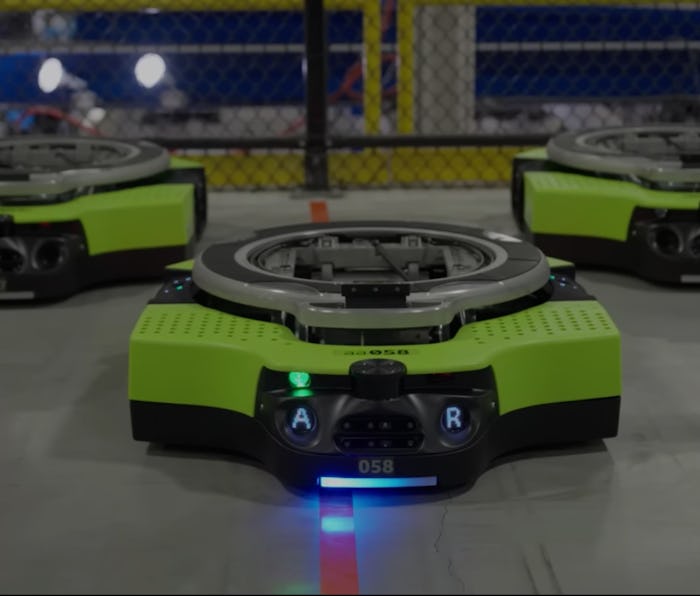Robot Army
Amazon’s newest robot is a dinky warehouse Roomba called Proteus
The company's “first fully autonomous mobile robot” has a pretty dramatic name for such a mundane job.

Amazon was very proud to announce its “first fully autonomous mobile robot” yesterday, and it’s got quite the imposing name — one that implies a monumental shift in the way the company’s human labor force will interact with AI-driven technology. “Historically, it’s been difficult to safely incorporate robotics in the same physical space as people. We believe Proteus will change that while remaining smart, safe, and collaborative,” Amazon explained in its press release. “The robot was built to be automatically directed to perform its work and move around employees—meaning it has no need to be confined to restricted areas.”
So, what can we expect from Proteus? An anthropomorphic, bipedal machine that competes with Tesla’s much-hyped, totally coming out this year, equally dramatically named robot, Optimus? Well, let’s check out the promotional video for Proteus ourselves...
So, that’s Proteus — a puny little Roomba forklift. Welp, I’ll just go back to eagerly awaiting for Tesla’s Optimus to disappoint...
The good and the bad — To be fair, it does sound like Amazon is trying to address some of its infamously abhorrent warehouse safety conditions, albeit in the most Amazon way possible. The fulfillment facilities rely on large transport shelving units referred to as GoCarts, which until now were only moved by employees. “Our vision is to automate GoCart handling throughout the network, which will help reduce the need for people to manually move heavy objects through our facility and instead let them focus on more rewarding work,” Amazon explained in its announcement, pointing towards an attempt to lessen the number of workplace injuries within these environments.
Proteus isn’t Amazon’s only new robot to hit warehouses in the near future. In the same press release, the company touted Cardinal, an AI-driven arm that aims to cut down on employees’ physical lifting (one of the biggest sources of injuries), along with an AI package identification system to reduce manual item scanning, and a more ergonomically friendly shelving ‘bot’.
That said, this definitely foreshadows companies like Amazon’s continuing efforts to automate their labor forces, which does not bode well for many employees. Unless Amazon offers their workers things like training to ensure they can move into new roles, these dramatically dubbed autonomous robots will become the majority of any given warehouse’s staff.